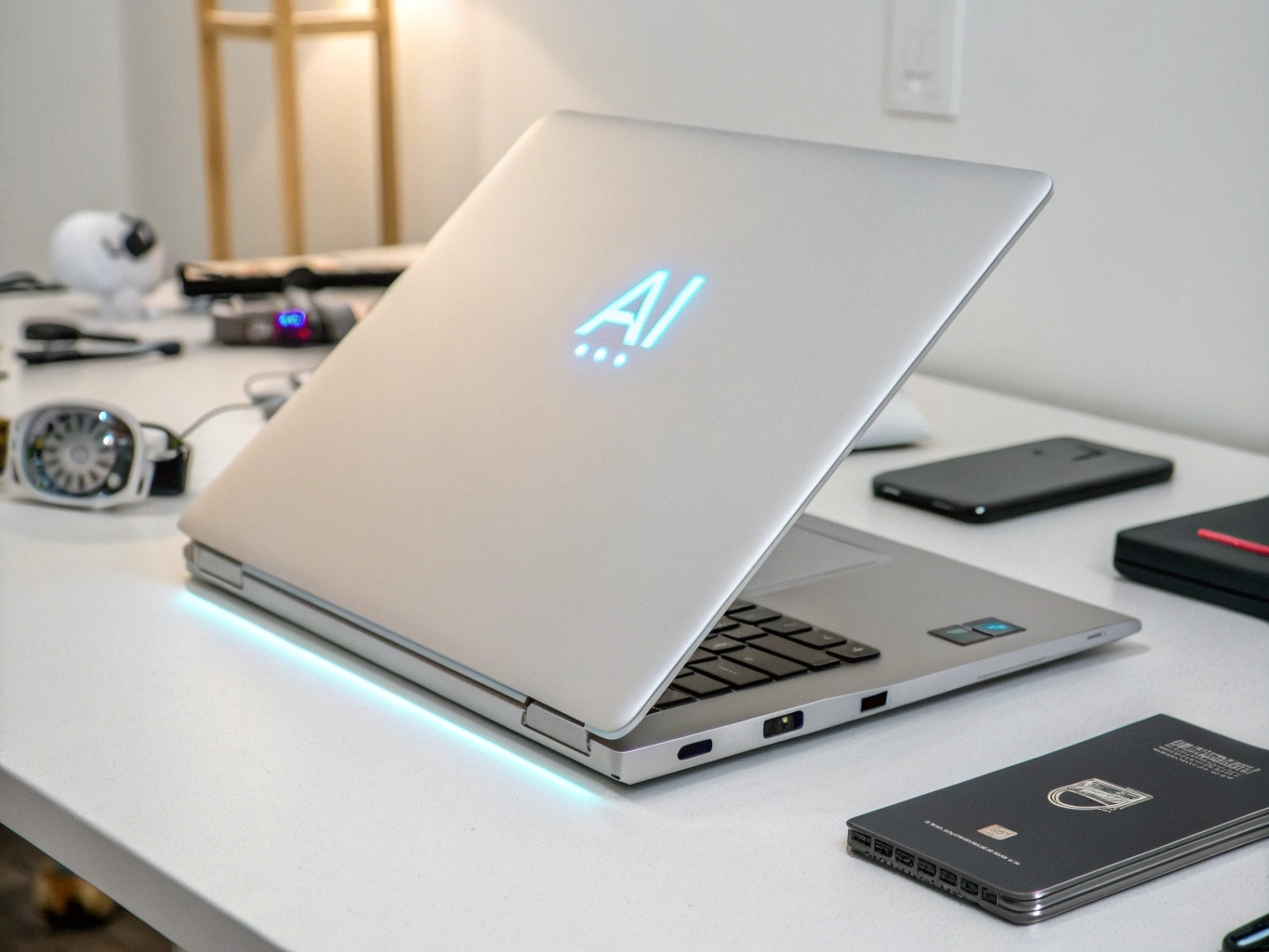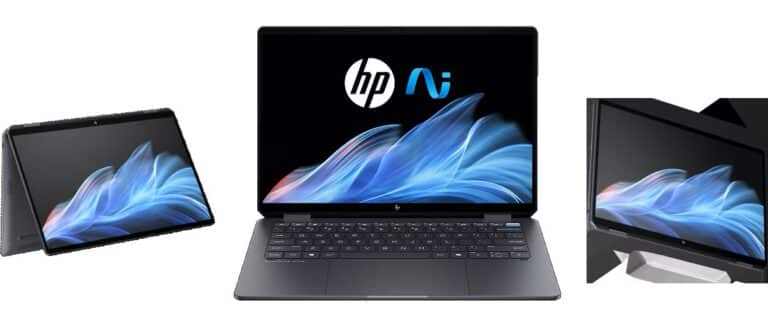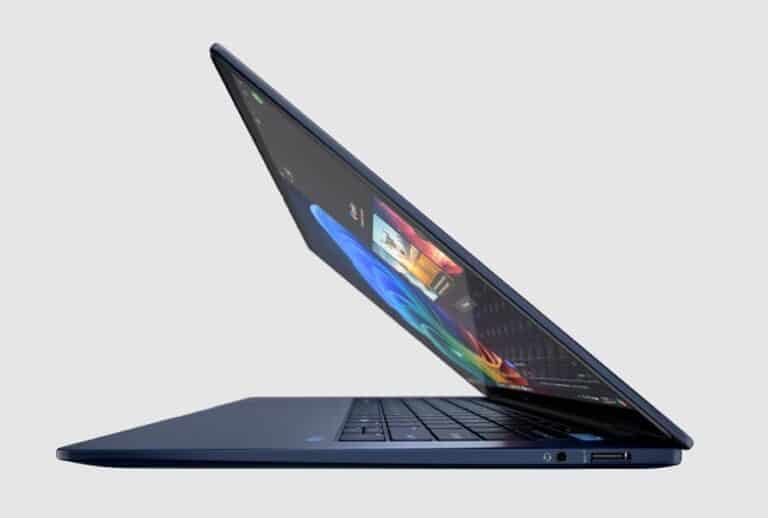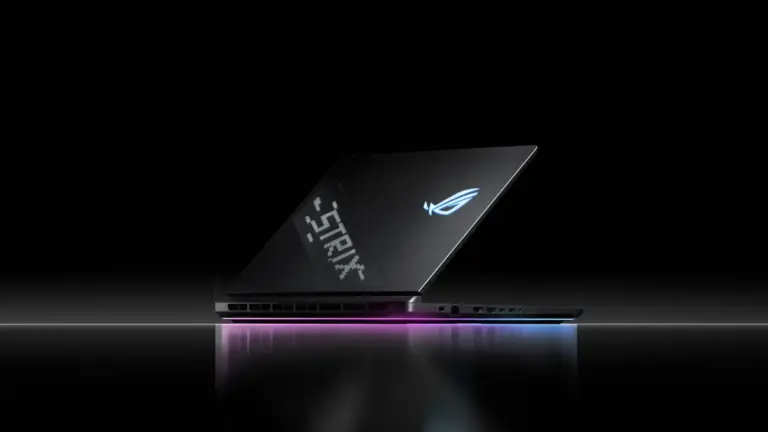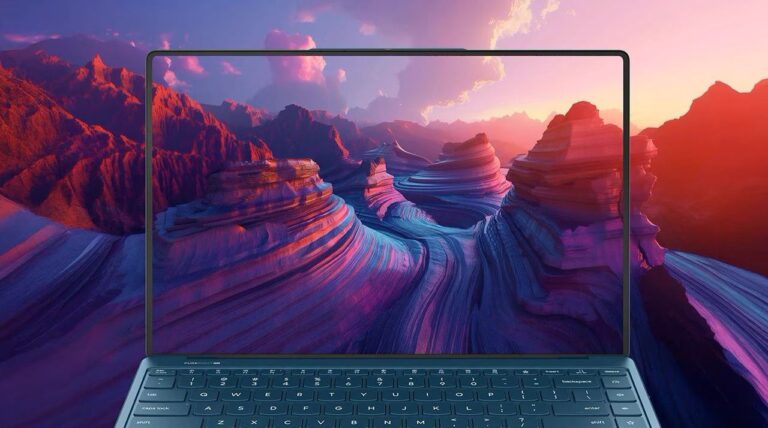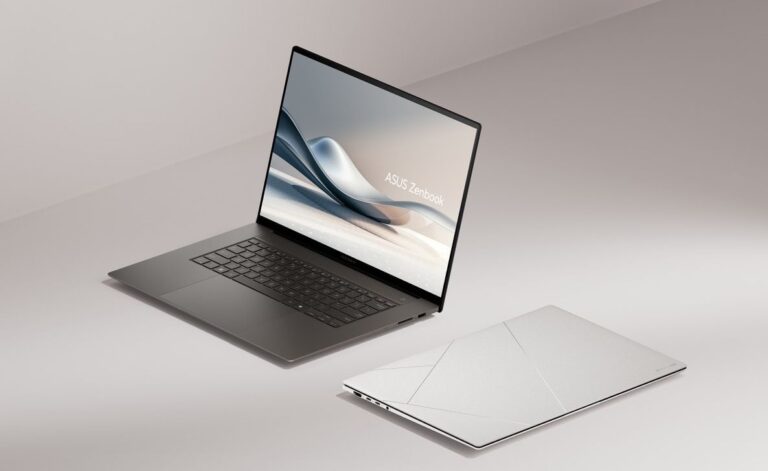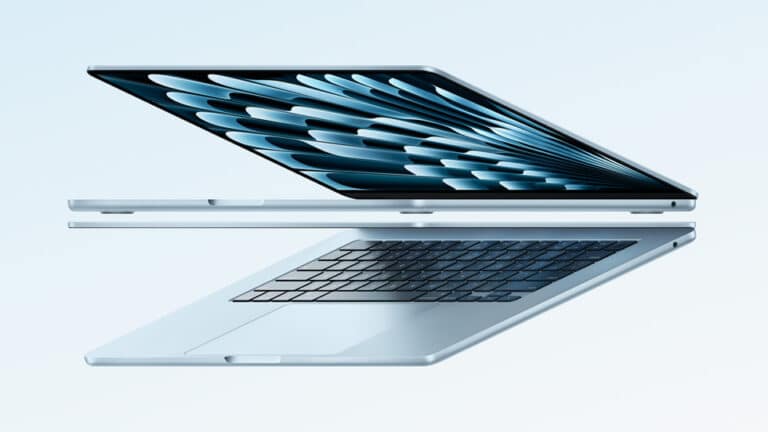Your Best AI Laptop Match
For most users: ASUS Zenbook A14 delivers exceptional AI performance with 45 TOPS NPU power, 12+ hour battery life, and ultra-portable design at competitive pricing.
For power users: ASUS ROG Strix Scar 18 provides unprecedented 1,837 TOPS of AI processing capability with RTX 5090 mobile GPU for demanding local AI model training and complex generative tasks.
For value seekers: Apple MacBook Air M4 offers robust AI capabilities through its Neural Engine, doubled base RAM, and $100 price reduction from previous generation.
For business professionals: HP EliteBook Ultra 14 combines enterprise security with 48 TOPS NPU performance and premium build quality for mission-critical AI workflows.
Understanding Modern AI Computing Requirements
The artificial intelligence revolution has fundamentally changed laptop design priorities. Today’s AI-enabled systems require specialized processing units beyond traditional CPU and GPU configurations. The Neural Processing Unit (NPU) has emerged as the critical component that distinguishes genuine AI laptops from conventional portable computers.
Microsoft’s Copilot+ PC certification requires minimum 40 TOPS (Trillion Operations Per Second) AI processing capability, establishing the baseline for meaningful local AI performance. This threshold ensures smooth execution of real-time AI tasks including image enhancement, natural language processing, and background computational assistance without draining battery resources.
The key distinction lies in how different users engage with AI technology. Basic users primarily interact with integrated AI features like webcam enhancement, voice transcription, and productivity assistants. Advanced users require substantial computational power for running large language models locally, generating complex visual content, or training custom AI applications.
AI Laptop Performance Categories: Matching Power to Purpose
Everyday AI Integration (40-50 TOPS)
Systems in this category excel at seamless AI integration within standard productivity workflows. The ASUS Zenbook A14 is a nice example this approach with its Snapdragon X1-26-100 processor delivering 45 TOPS through its Hexagon NPU. This configuration handles Windows 11’s built-in AI features, real-time language translation, and intelligent battery management without performance penalties.
The HP OmniBook Ultra Flip 14 pushes this category’s boundaries with Intel’s Core Ultra Series 2 processors achieving 48 TOPS. Its convertible design adds versatility for AI-assisted creative work, while maintaining the efficiency necessary for all-day productivity sessions.
Professional AI Workloads (48-68 TOPS)
Professional applications demand higher AI processing capabilities for complex analytical tasks and content generation. The Dell XPS 13 with Intel Core Ultra 7 258V represents this tier perfectly, combining 25 TOPS NPU performance with enhanced Xe2 integrated graphics for a total of 68 TOPS capability.
Business-focused AI laptop systems like the HP EliteBook Ultra 14 integrate enterprise security features with professional-grade AI performance. These machines balance computational power with corporate requirements including advanced encryption, remote management capabilities, and compliance certifications.
Power User Applications (1,000+ TOPS)
Extreme AI workloads require dedicated graphics processing alongside specialized AI silicon. The ASUS ROG Strix Scar 18 delivers 1,837 TOPS through its combination of Intel Core Ultra 9 275HX and NVIDIA RTX 5090 mobile GPU. This configuration enables local training of large AI models, complex video generation, and real-time rendering of AI-enhanced content.
These AI laptop systems sacrifice portability for computational capability, typically weighing over 7 pounds and requiring substantial cooling solutions to maintain peak performance during sustained AI processing tasks.
Platform Architecture in AI Laptops: Comparison
ARM-Based Solutions: Efficiency Champions
Qualcomm’s Snapdragon X platform revolutionizes laptop AI performance through ARM architecture optimization. The Surface Laptop 7 demonstrates this approach with 18.5-hour battery life while maintaining consistent AI processing capability. Snapdragon X Elite and Plus processors integrate 45 TOPS NPU performance with exceptional power efficiency.
ARM-based systems excel in scenarios requiring sustained AI processing without access to power outlets. However, software compatibility remains a consideration for specialized applications not yet optimized for ARM architecture.
Intel’s Unified Approach: Balanced Integration
Intel’s Core Ultra Series 2 processors represent a balanced approach to AI computing, combining traditional x86 compatibility with dedicated NPU silicon. The Lenovo Yoga Slim 9i showcases this strategy with 47 TOPS NPU performance alongside robust CPU capabilities for demanding productivity applications.
Intel’s AI Boost technology optimizes task distribution between CPU, GPU, and NPU components, ensuring efficient resource utilization across diverse AI workloads. This approach particularly benefits users who require both AI capabilities and legacy software compatibility.
AMD’s X86 Innovation: Power Without Compromise
AMD’s Ryzen AI 300 series processors push NPU performance to 50 TOPS while maintaining full x86-64 compatibility. The ASUS Zenbook S 16 demonstrates AMD’s efficiency gains, achieving 13+ hour battery life from traditional x86 architecture.
AMD’s approach appeals to users who require maximum AI performance without ARM compatibility concerns, particularly for professional workflows involving specialized software tools.
Apple’s Integrated Excellence: Cohesive Ecosystem
Apple’s M4 processors integrate Neural Engine capabilities seamlessly with CPU and GPU components. The MacBook Air M4 achieves 50,889 TOPS in Neural Engine testing while maintaining the platform’s renowned efficiency and build quality.
Apple Intelligence features leverage this integrated approach for sophisticated AI capabilities including advanced text processing, image generation, and intelligent system optimization. The ecosystem integration provides unique advantages for users committed to Apple’s software environment.
Display Technology for AI Applications
OLED Advantages for Creative AI Work
High-quality displays become crucial when working with AI-generated visual content. The Lenovo Yoga Slim 9i’s 4K OLED panel with 120Hz refresh rate and 750 nits HDR brightness provides the color accuracy necessary for evaluating AI-generated images and videos.
OLED technology offers perfect contrast ratios essential for identifying subtle details in machine-generated content. The Surface Pro 11’s 2880×1920 OLED display exemplifies this advantage with 100% sRGB and 96% DCI-P3 color reproduction.
High Refresh Rate Benefits
AI applications increasingly incorporate real-time interactions requiring smooth visual feedback. The ASUS ROG Strix Scar 18’s 240Hz mini-LED display with over 2,000 dimming zones provides the responsiveness necessary for interactive AI development environments.
Variable refresh rate technologies optimize power consumption during AI processing tasks, maintaining visual quality while preserving battery life during extended work sessions.
Connectivity and Expansion Considerations
Thunderbolt 5 Integration
Advanced AI workflows often require high-speed data transfer capabilities. The ASUS ROG Strix Scar 18 includes dual Thunderbolt 5 ports supporting 80Gbps bandwidth for connecting external GPUs or high-speed storage arrays necessary for large AI model storage.
Network Performance Requirements
AI applications increasingly rely on cloud-based model access requiring robust connectivity. Wi-Fi 7 support ensures optimal performance when accessing remote AI services or synchronizing large datasets across distributed AI development teams.
Battery Life and Thermal Management
Efficiency-Focused Designs
The ASUS Zenbook A14’s 70Wh battery achieves 12+ hours of runtime while maintaining full AI processing capability. Advanced power management systems distribute AI workloads across available processing units to optimize energy consumption.
Thermal design becomes critical for sustained AI performance. The ASUS ROG Strix Scar 18’s three-fan cooling system with massive vapor chamber enables continuous 175W GPU operation necessary for intensive AI training tasks.
Security and Enterprise Integration
Enterprise AI laptops integrate NPU capabilities with security systems for real-time threat detection. The HP EliteBook Ultra 14 leverages its 48 TOPS NPU for Wolf Security features, providing AI-enhanced protection without impacting primary application performance.
Business AI systems require comprehensive management capabilities including remote deployment, security policy enforcement, and compliance monitoring. These features become essential for organizations implementing AI workflows across distributed teams.
AI Laptop Value Analysis and Recommendations
Budget-Conscious AI Computing ($1,000-$1,500)
The HP OmniBook Ultra Flip 14 provides exceptional value with Intel Core Ultra Series 2 performance, 48 TOPS NPU capability, and convertible design flexibility. Regular sales reduce pricing to $1,000, making professional AI capabilities accessible to broader user bases.
Premium Productivity ($1,500-$2,500)
The ASUS Zenbook A14 represents optimal balance between AI performance, portability, and build quality. Its Snapdragon X platform provides consistent performance across diverse AI applications while maintaining ultrabook form factor convenience.
Professional Workstation ($2,500-$4,000)
The HP EliteBook Ultra 14 justifies premium pricing through enterprise features, superior build quality, and comprehensive AI optimization. Business users benefit from integrated security, management capabilities, and vendor support services.
Extreme Performance ($4,000+)
The ASUS ROG Strix Scar 18 delivers uncompromising AI performance for users requiring maximum computational capability. Its RTX 5090 mobile GPU enables AI workloads impossible on conventional laptop platforms.
Future-Proofing Considerations
AI software requirements evolve rapidly, making upgradeability crucial for long-term value. Systems with user-accessible RAM and storage slots provide flexibility for adapting to changing AI application demands.
Copilot+ PC requirements represent current minimum standards, but future AI applications will likely demand higher performance thresholds. Investing in systems exceeding current requirements ensures continued relevance as AI software evolves.
Conclusion: Making the Strategic Choice
The optimal AI laptop depends entirely on your specific use cases and performance requirements. Casual users benefit most from efficient ARM-based systems like the ASUS Zenbook A14, while power users require dedicated GPU capabilities found in workstation-class machines.
Consider your primary AI applications, required battery life, portability needs, and budget constraints when making your selection. The rapid evolution of AI technology makes choosing systems with performance headroom and upgradeability crucial for long-term satisfaction.
The current AI laptop market offers excellent options across all price points and use cases, making 2025 an ideal time to invest in AI-capable computing hardware that will enhance productivity and creativity for years to come.
If you are interested in this topic, we suggest you check our articles:
- 3 Big Reasons to be using an AI Laptop
- Nvidia’s DGX Spark and DGX Station: Desktop AI Supercomputing Arrives
Written by Alius Noreika
